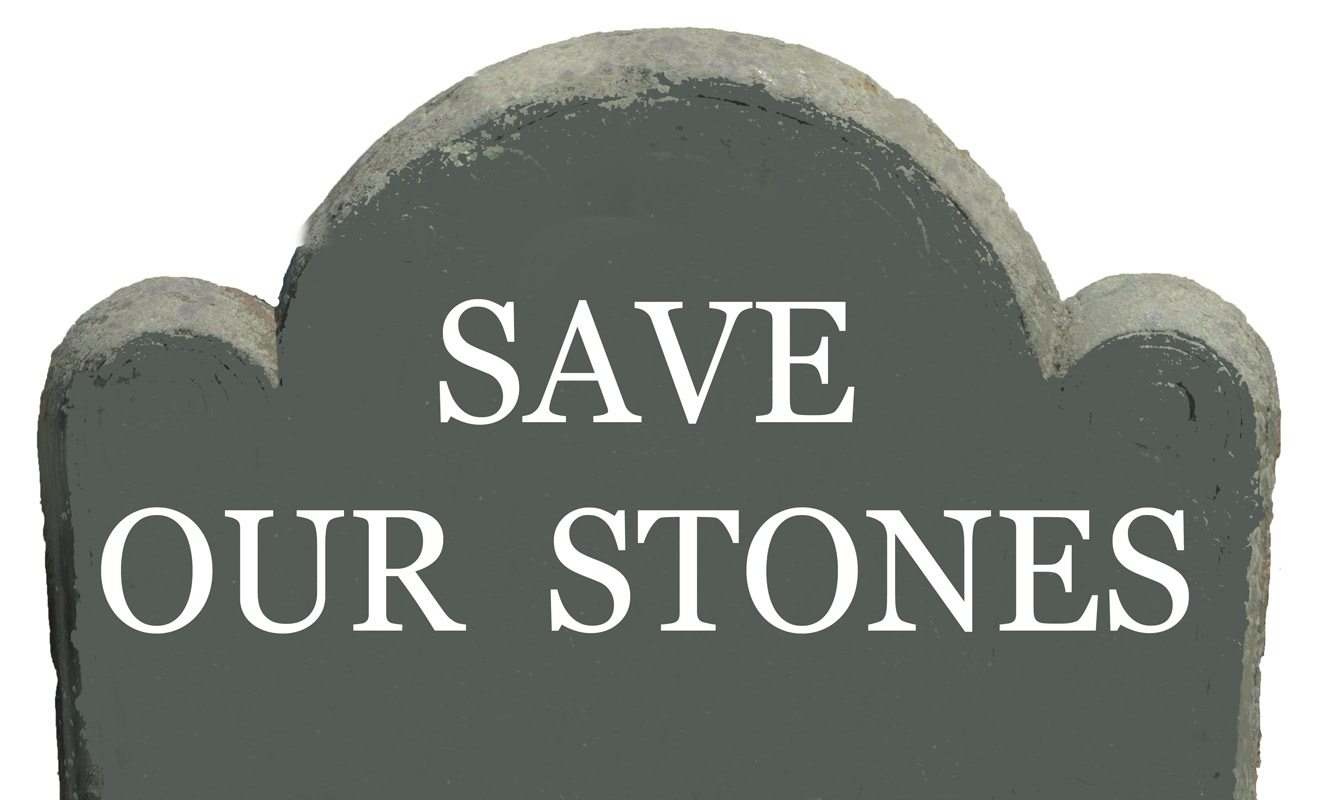

Newport Common Burying Ground (NT003)
The Common Burying Ground was established in 1665 to provide a final resting place for everyone in Newport. People of all religions were welcomed here as were the wealthiest to the poorest individuals. Eight-five percent of colonial burials in Newport were in this site.
In life the different religious groups may have argued about their beliefs but in death the slate gravestones are uniform in their wording and ornamentation.
The site covers 10.2 acres and contains the remains of more than eight thousand people. It was added to the National register of Historic Places in 1974.
The northern section of the site is referred to as "God's Little Acre" and is the largest collection of gravestones for colonial people of African heritage in the country.
Use this link for the Rhode Island database for this site.
1903 Map and Index
In 1903 the city conducted a mapping of the Common Burying Ground. A grid was created to locate specific graves using a letter and a number. The map shows the name of the people buried in that section.
Below is the sqaure for section c 12

To use the 1903 information use this link.
Important gravestones or burials are listed below.
Select this link for a document that includes more notable graves and all military graves.
Numbers refer to this map which you can print to help locate the stones.
1. Charles Bardin (1700-1773) This stone, carved by John Bull, was considered controversial for its depiction of Moses or possibly God. Biblical images on stones were extremely rare.
2. Samuel Cranston (1659-1727) Longest serving governor of Rhode Island (about 30 years). Legend is he was captured by pirates. Cranston, RI was named for him.
3. Charles Dyre (1650-1709) The Dyres were one of the original families to settle Newport. Charles was the son of Mary, a Quaker hanged in Boston for her religious beliefs in 1660. The Dyre graves were moved here in 1889 as a result of development of the family farm.
4. William Ellery (1727-1820) A Son of Liberty and Harvard-educated lawyer who signed the Declaration of Independence in 1776 as a delegate from R.I. to the Second Continental Congress.
5. Arthur Flagg (1733-1810) Also known as Arthur Tikey, he was a member of the Seventh Day Baptist Church, a rope maker, and a prominent member of the Free African Union Society.
6. James (1697-1735) and Ann Franklin (1696-1763) James was the official printer for Rhode Island. After his death, his wife Ann became the official printer for the colony. The family started publishing the Newport Mercury in 1758.
7. Newport Gardner family Silva (1783c-1784), Charles Quamine (1794-1798), Abraham (1796c-1798), Limas (-1821)
Newport Gardner, also known as Occramer Marycoo, was a member of the First Congregational Church, a musician, teacher, a founding member of the Free African Union Society. He died in Africa in 1826 and is not buried here with his wife and children.
8. Cuffe Gibbs (1728c-1768) This stone was carved by Pompe Stevens, brother to Cuffe. Stevens was a talented enslaved carver in the shop of William Stevens.
9. Langley children Sarah(x2), Nathaniel, Royal, William(x2) This stone was carved by John Bull for the six infant children of William and Sarah Langley. The children died between 1771 and 1785.

10. Ida Lewis (1842-1911) Lighthouse keeper of Lime Rock for thirty nine years. Ida was credited with saving at least eighteen lives.
11. Stephen Mumford (1639-1707) Born in London, a founder of the Seventh Day Baptist Church in America and first owner of the Wanton Lyman Hazard house. The stone was carved in Boston.
12. Duchess Quamino (1739-1804) Active in the African Union Society and influential in the life of William Ellery Channing, foremost minister in the Unitarian Church.
13. Peter Quire (1806-1899) A free African-American abolitionist, missionary, and cobbler who founded St. John the Evangelist church in Newport (1865). The congregation originally met in his home until building a church on Poplar Street.
14. John Stevens (1647c-1736) Founder of the Stevens stone carving business in 1705. His son William carved the stone.
 15. Phillis Stevens (1746c-1773) The first wife of Zingo, a founding member of the Free African Union Society. Her stone features an image of mother with child.
15. Phillis Stevens (1746c-1773) The first wife of Zingo, a founding member of the Free African Union Society. Her stone features an image of mother with child.
16. Jane Stuart (-1888) An accomplished artist and daughter of Gilbert Stuart (1755-1828), colonial America's foremost portrait painter.
17. William Vernon (1720c-1806) He was instrumental in the formation of the Colonial Navy and his house in Newport was Rochambeau's headquarters during the American Revolution.






